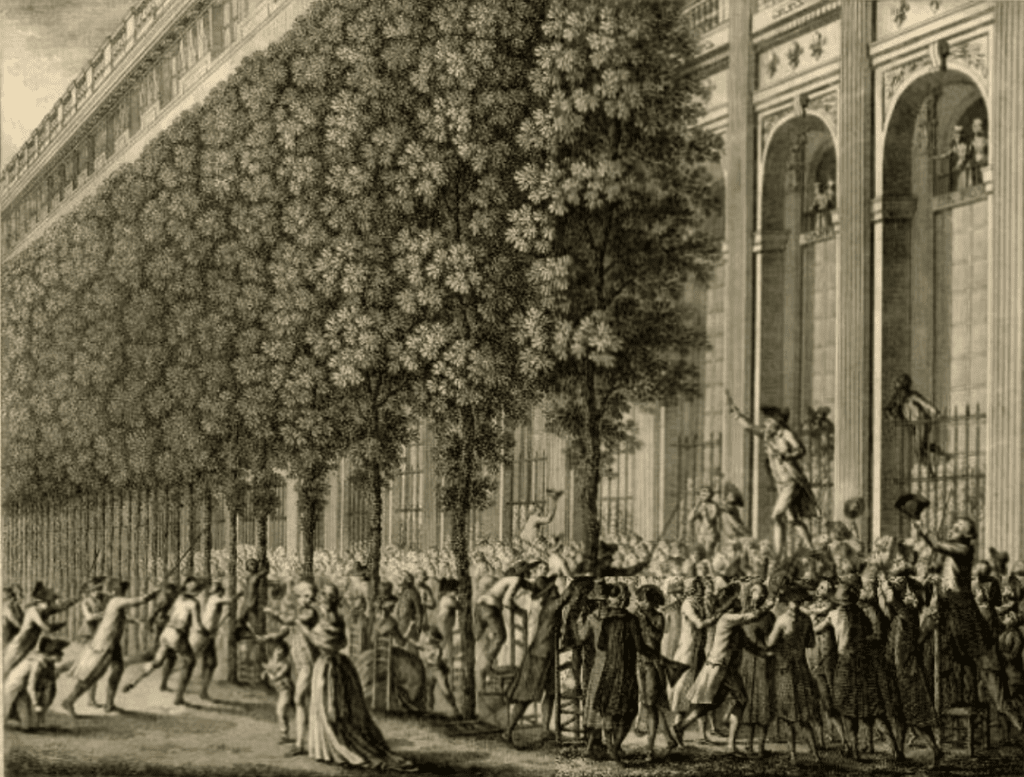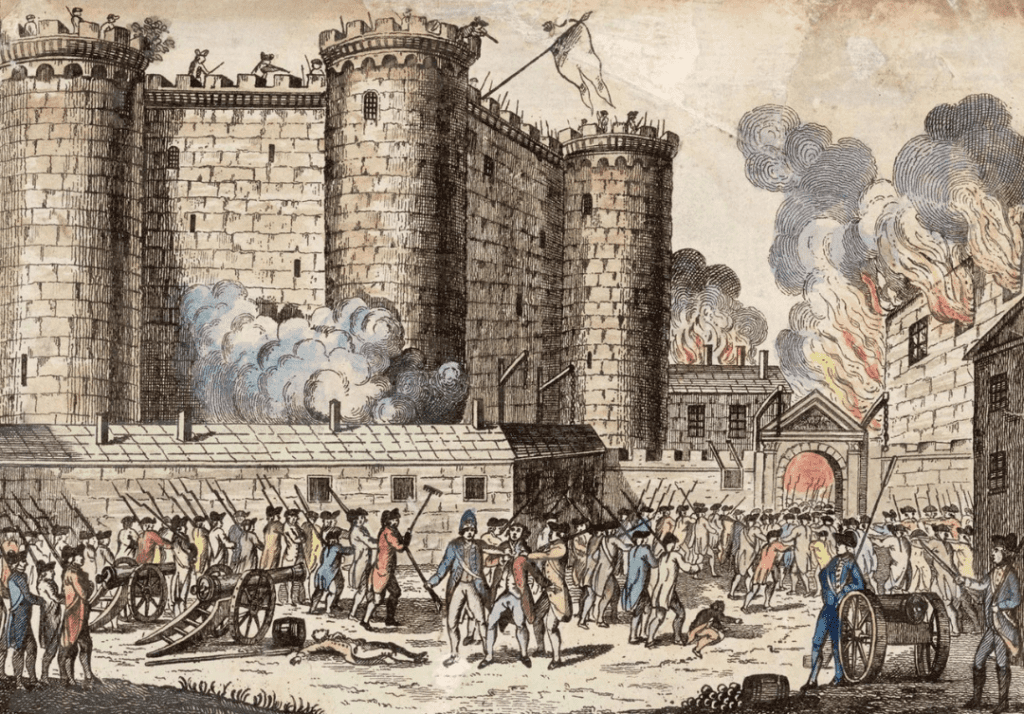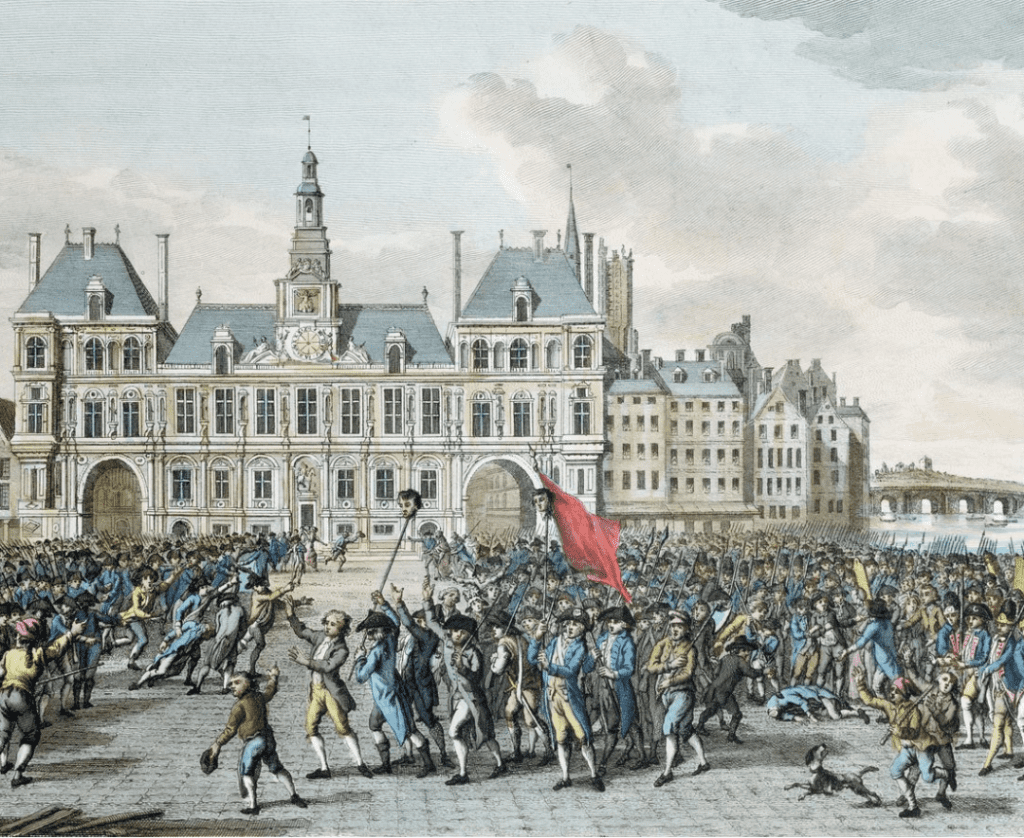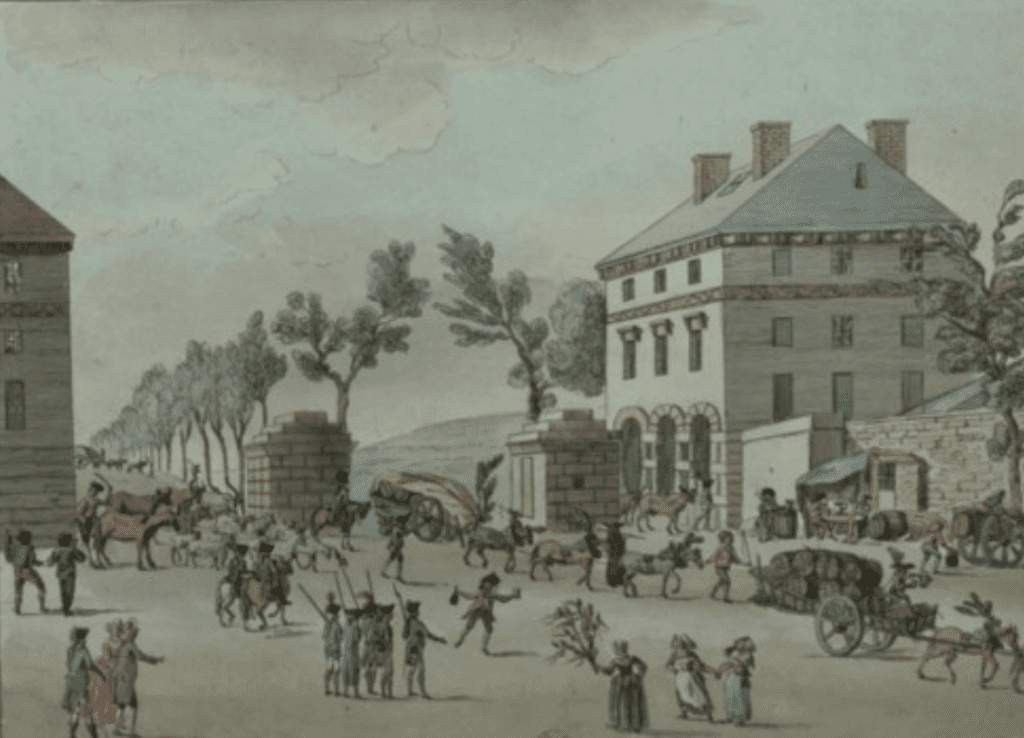If you’re in Paris for Bastille Day — referred to by locals as la fête nationale or le quatorze juillet — you might be inclined to do the usual pastimes that mark this day: watch the military parade, enjoy a picnic, admire the fireworks, go to a bal des pompiers … but there’s another way to get into the spirit of the national holiday, and that’s by following the ghosts of 14 July 1789. Below are some of the key locations of the day, considered to be the date that best symbolises the victory of the people over royal authority …
The Palais-Royal
If you wander around the haven of tranquility that is the Jardin du Palais-Royal, you’ll find it hard to believe that this garden once set the scene for one of Paris’s most violent periods. And if a Parisian were to time-travel from 1789 to today, they might wonder how this one-time party central became so quiet and calm. Back in the late eighteenth century, there were the same arcaded boutiques and walkways of neatly trimmed trees, but there was also so much more.

In the middle of the garden was the Cirque (Circus), an enclosed hippodrome-style structure that featured shops around its columned exterior, and held all sorts of soirées, balls, and dinners. As you can also see in the above illustration, there was another structure to the south of the Cirque: the Galerie des Bois, Paris’s first shopping arcade.
The Palais-Royal, back in the 1780s, was brimful with boutiques; it was one way in which Louis-Philippe II, Duke of Orléans, could fund his extravagant lifestyle. He had redeveloped his palatial grounds into a kind of pleasure garden several years earlier, adding the three wings that still frame the northern end of the estate. He rented out the ground spaces as shops and restaurants, and filled the upper floors with dance rooms, gaming dens, billiard halls, and brothels. The garden was open to all Parisians, day and night, except for police — making for a rowdy fairground, bazaar, and dance party all in one.
What the Duke could not have known is that he’d helped lay the fertile ground for the French Revolution. It was here where courtesans passed as countesses, a precursor of a democratic future France; and where, far from the watchful eyes of the authorities, political discussions could morph into full-blown movements. Throughout the eighteenth century, Parisians were becoming more literate and politically aware. The city’s proliferating cafés, like those at the Palais-Royal, held impassioned impromptu debates.

On Sunday 12 July 1789, the political atmosphere in Paris was fraught, with fears that the King was planning to overthrow the Third Estate. The sans-culotte journalist Camille Desmoulins gave a particularly impassioned anti-royalty speech from atop a table of a café terrace (above), which would rile the crowds. It was a call to arms that would be heeded two days later …
Les Invalides
By the morning of 14 July 1789, Paris was in a feverish state of both excitement and panic: excitement because a flurry of public speakers and pamphlets had been encouraging Parisians to rise up; panic because rumours were rife that royal troops were about to attack the combative city. With the aim of arming itself, an unofficial army of 50,000 Parisians marched to Les Invalides, where the French Guard, siding with the people, allowed them to take 32,000 rifles.

Les Invalides was originally a home and hospital for retired and wounded soldiers. These days it’s a complex that also houses the Musée de l’Armée, which is open every Bastille Day (when entry is free), and provides a fascinating overview of the darker, more violent history of the City of Light. Despite being home to the Army Museum, Les Invalides is a surprisingly tranquil spot. The church and chapel are a glorious sight to behold, and the Rue de Grenelle garden, with its fairytale topiary trees and resident rabbits, is lovely.
Place de la Bastille
The Bastille was a medieval fortress prison on the eastern edge of Paris — on what is now Place de la Bastille. In 1789, it was also a symbol of royal authority and oppression. What’s more, its cellars stored gunpowder, which is why, on 14th July, the newly formed and armed Parisian militia marched here in search of ammunition. When the governor of the Bastille, the Marquis de Launay, refused to surrender, the prison was stormed, and De Launay captured and taken to City Hall (more on that soon).

If you head out to Place de la Bastille, you’ll find it difficult to imagine yourself back in 1789. The square is now home to a blur of cars and a monument — the July Column — dedicated to another revolution altogether, that of 1830. Go down to the Line 5 platform of Bastille métro station, however, and you’ll see some vestiges of the old prison’s base. Most of its parts were dispersed all over Paris, and France, for the creation of souvenirs, as well as to pave streets. The Pont de la Concorde, incidentally, was completed thanks to Bastille stones.
The Hôtel de Ville
After storming the Bastille, rebel Parisians made their way to City Hall, forcing De Launay along with them. Before an execution method could be decided, angry hordes attacked and killed him, and then turned their rage to Jacques de Flesselles, provost of the merchants. The heads of both men were hoisted atop pikes and paraded to the Palais-Royal, where celebrations lasted all night.

Incidentally … Today’s Hôtel de Ville is a close replica of the one that was destroyed in the Commune of 1871. The square in front was, before 1802, known as Place de Grève. Une grève is a strike, but also a sandy bank, and this square was originally just that: a shore where trading boats would unload goods, and also where itinerant workers would wait in the hope of a job for the day. The Place de Grève’s link to the precarious plight of the working class is thought to explain the etymology of the French word for strike.
The Barrière d’Enfer
The Wall of the Famers General, built from 1784, contained a series of tollbooths that policed all incoming wagons to raise taxes for the French state. By 1789, they were despised as yet another symbol of royal oppression, and attacks on the various gates ramped up from early July. There are only four left, including the Barrière d’Enfer, which was left in peace in 1789, being the property of the Duke of Orléans (of the Palais-Royal), who was at the time considered a friend of the people.

These days, one of the pair of buildings that make up the old tollgate is the entrance to the Catacombs (the underground ossuary that holds the remains of over six million Parisians); the other houses the Museé de la Libération, dedicated to the Parisian experiences of World War II. Both are open on Bastille Day, and make for a fascinating reflection on two opposing forces that have shaped Paris: destruction and death, and the ongoing struggle for freedom.

